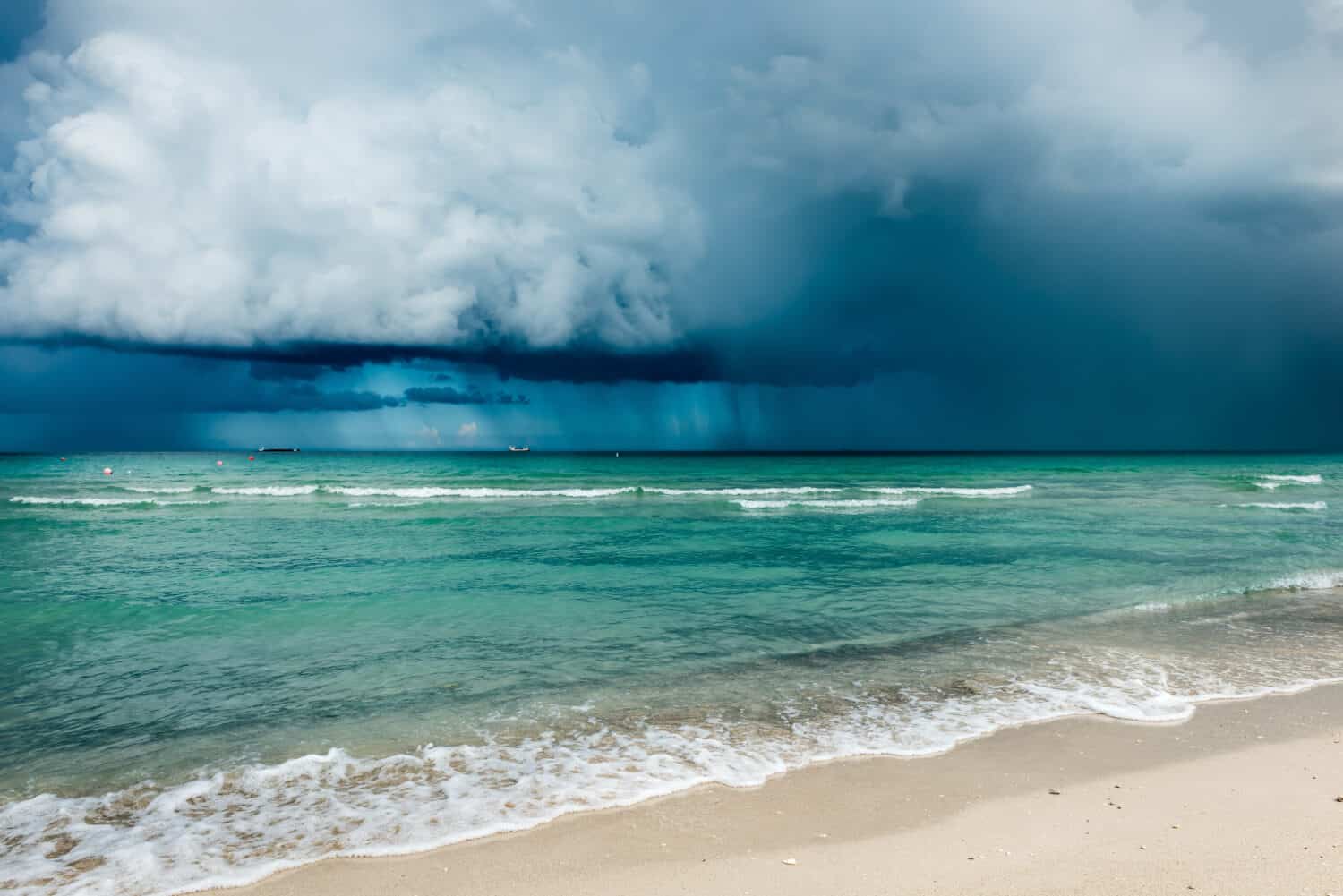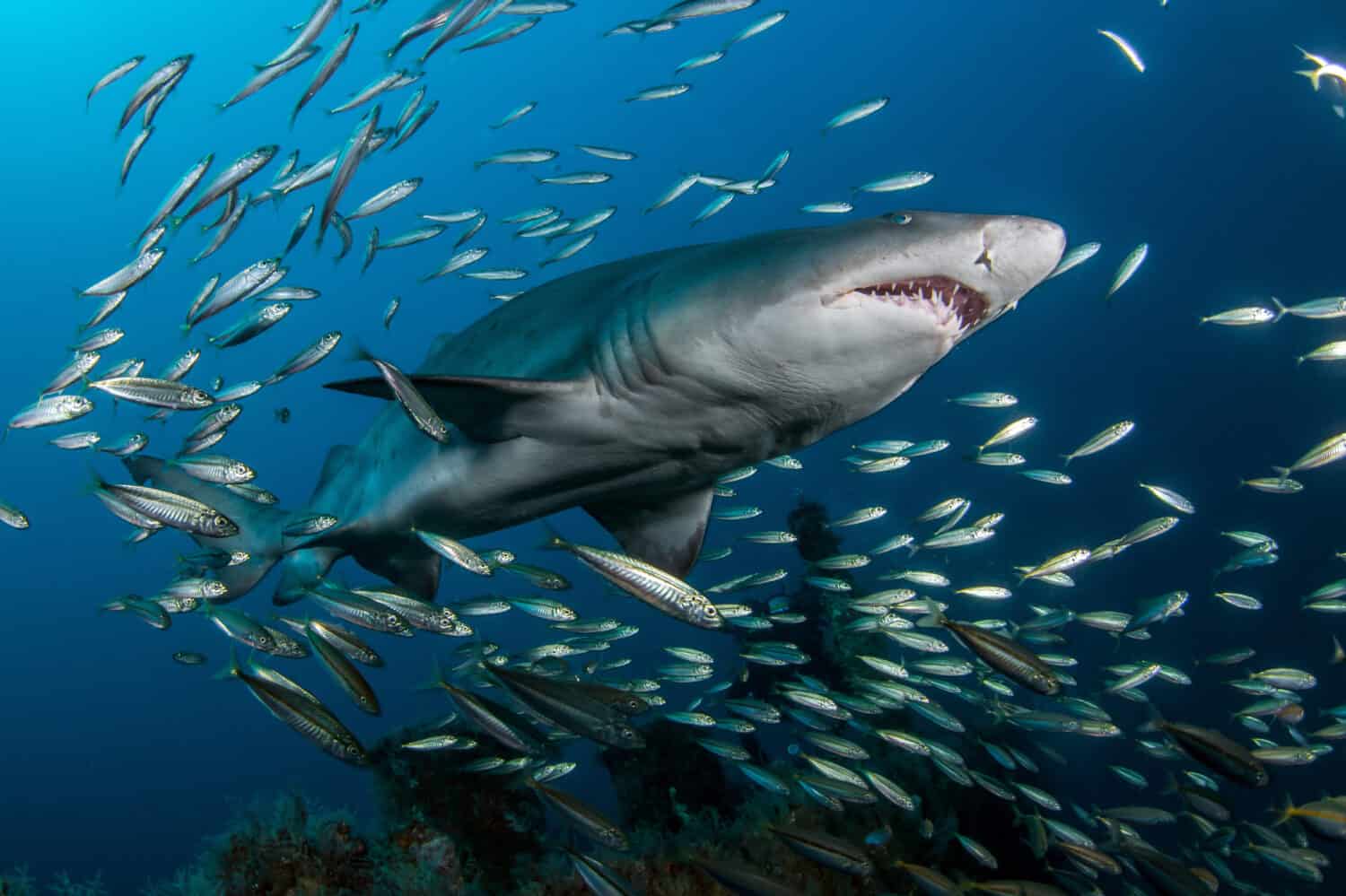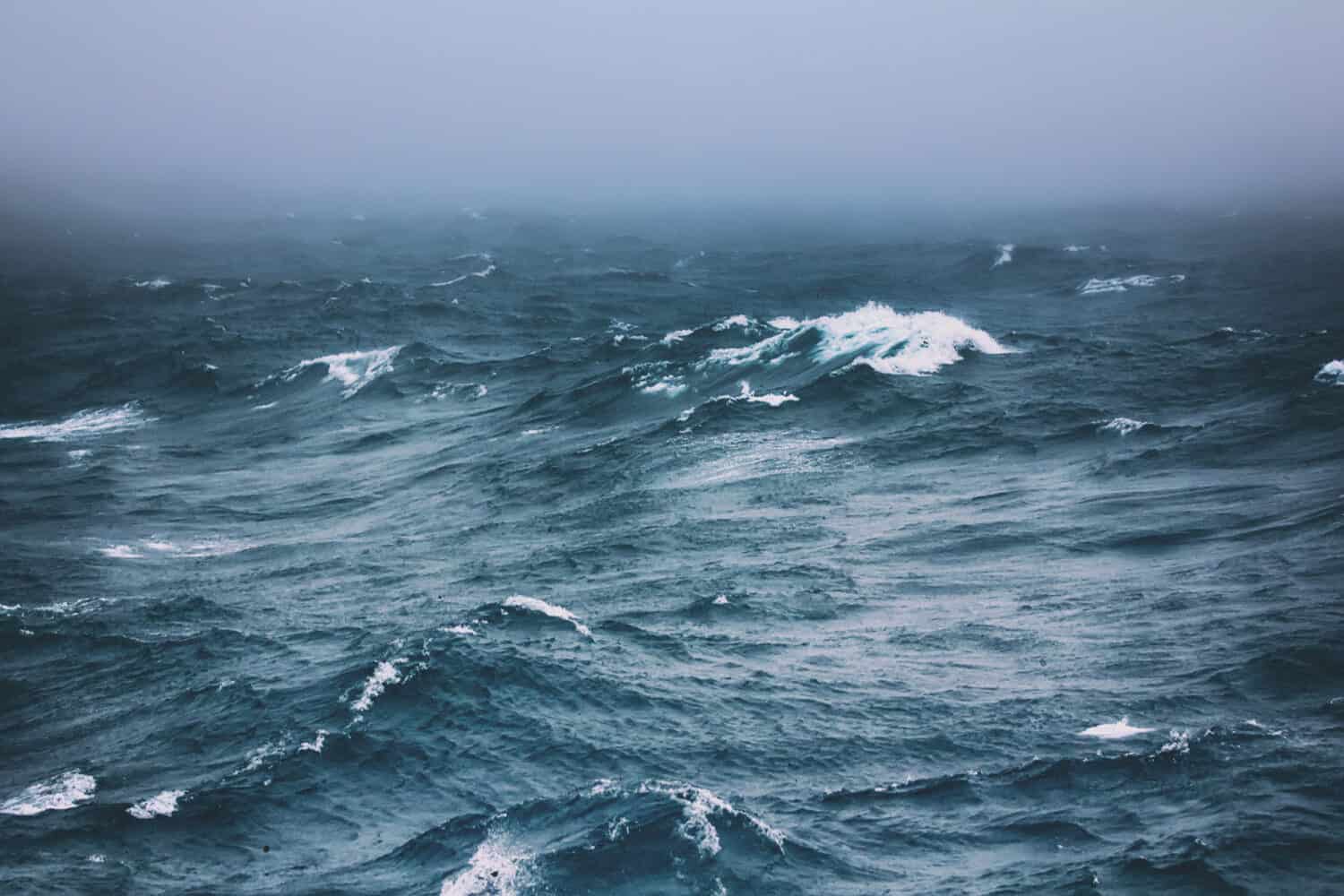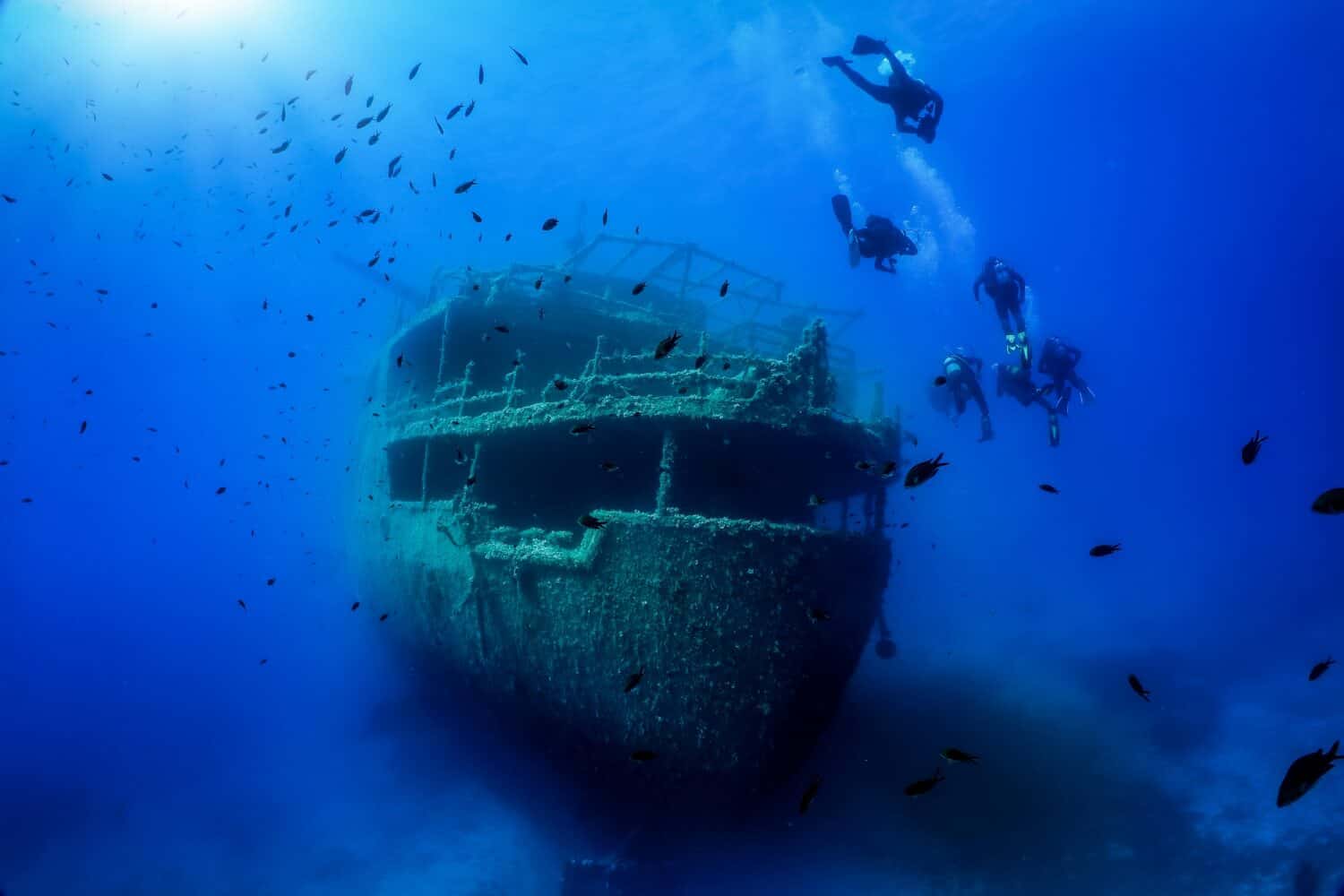

A recent video went viral on YouTube showcasing a great white shark among many smaller sand tiger sharks. Posted by Instigator Fishing & Diving, the clip allows viewers to see from the diver’s point of view as he ventures off the coast of North Carolina during the winter, exploring an offshore wreck.
As you can see in the video, the wreck boasts countless sand tiger sharks and acts as a migratory sanctuary for other fish visitors. However, it’s also common to see great white sharks in this area — especially during the colder months. This is exactly what happened in the video. In fact, you can even hear the diver let out a yelp when caught off guard by this massive creature.
This article will dive into the details of both sand tiger sharks and great white sharks, exploring their average sizes, behaviors, and interactions with humans.
What are sand tiger sharks?

Sand tiger sharks are a species of shark that feed off of bony fish, smaller sharks, rays, crabs, squid, lobsters, and similar prey. These sharks maintain neutral buoyancy by gulping air at the water’s surface. They then hold the air in their stomach so they can hover in the water. The sand tiger shark is the only type of shark known to do this.
Typically, the sand tiger shark is a solitary species. However, when feeding, mating, or birthing, they often gather in small schools. This species of shark is also considered vulnerable to extinction. Some of its predators include great white sharks, tiger sharks, and bull sharks.
Where do sand tiger sharks live?

Sand tiger sharks are found worldwide across temperate and tropical waters in shallow bays, sandy coastal waters, rocky or coral reefs, and near the seafloor. These sharks tend to stay close to the shore, often making them easy to catch. That being said, many fishermen will hunt these creatures using lines, nets, or spears. In fact, many people use the sharks’ fins to make fin soup, a common dish served in China, Taiwan, and Southeast Asia.
Are sand tiger sharks dangerous?

There’s no denying that sand tiger sharks look intimidating, with many of their features making them appear angry and aggressive. The shark is large-bodied, has beady eyes, and contains scattered, narrow, sharp teeth that are visible even when the shark has its mouth shut. Not only that, but the teeth also point in various directions, which only adds to its frightening appearance.
However, sand tiger sharks are actually quite docile creatures, especially toward humans who are minding their own business. While you likely don’t have to worry about an attack (this would be extremely rare), it can still feel frightening to know you’re swimming among countless sharks near the shoreline.
Even so, on the rare occasion that a sand tiger shark perceives a human as a dangerous threat, there could be a deadly shark attack. However, again, this would be a freak occurrence, and there is certainly not as much of a risk as with other sharks like great whites.
How big are sand tiger sharks?

Sand tiger sharks typically weigh between 110 to 660 pounds. Their size in length ranges from 6.6 to 10.5 feet. As noted before, this often gives them a frightening appearance, as they are relatively large-bodied sharks. However, in comparison to sharks like the great white, which makes its appearance in the video above, they are much smaller and less likely to attack.
What are great white sharks?

Watching the video linked above, you may have noticed the presence of a great white shark. Perhaps you even let out a scream like the diver in the clip. The shark certainly stands out among others, as it is ginormous in size and quite intimidating-looking. Great white sharks are a type of mackerel shark and are the world’s largest known predatory fish.
Great white sharks typically feast off sea otters, fish, rays, crustaceans, seals, dolphins, sea birds, marine turtles, and other sharks. With over 300 teeth, the massive creature will often rip apart its prey with no remorse. This is why they are one of the most feared shark species on earth.
Where do great white sharks live?

Great white sharks live worldwide but prefer temperate and subtropical waters. This species of shark will often migrate with the seasons to remain in water that is at its preferred temperature range, which is between 50 to 80°F.
You can find great white sharks near shorelines, in coastal waters, or wandering through offshore pelagic waters depending on their preferences, which shift with their age. For example, younger great white sharks often remain closer to the shore in shallow water while older white sharks spend more time in the open sea.
Are great white sharks dangerous?

Yes, great white sharks can be dangerous. In fact, they are known to be among the top three sharks that are most likely to hurt humans. That being said, many people who have encountered great white sharks were not attacked, and many of those who were survived their injuries.
A shark attack of any sort would typically only occur If the creature mistakes you for a threat or its prey. Nevertheless, this is rare — even with great whites. Even so, great white sharks are one of the most aggressive sharks in the world, they attack more humans than any other shark, and they display aggressive behavior.
How big are great white sharks?

Some of the largest great white sharks have grown up to 20 feet long and weighed up to 5,000 pounds. However, on average, they typically range between 11 to 16 feet in length and weigh between 1,000 to 2,500 pounds.
As large as the great white is, however, it’s actually not the biggest shark in the world. That would be the whale shark, which can reach 60 feet long and weigh over 20 tons (that’s over 40,000 pounds). I don’t know about you, but I wouldn’t want to be diving anywhere near that guy.
Why do sharks flock to shipwrecks?

As you can see in the video, sharks and other fish are often attracted to shipwrecks as a scavenging opportunity or even just a quick pitstop on their travels. Shipwrecks can provide a good source of food to marine life, and sharks will often find a plethora of fish and other animals to feast on in the area.
Is it safe to dive with sharks?

After reading the above information, you might be wondering whether or not it’s safe to dive with sharks. While many people choose to do it with little to no fear, diving with sharks does come with its risks. However, the activity itself isn’t necessarily deemed harmful or more dangerous than, say, jumping out of an airplane.
Sharks can — and sometimes do — attack divers, but as mentioned earlier, this is rare. Many people believe that simply being in close proximity to a shark will tempt it to attack, but this actually isn’t true. Unless a shark feels threatened or mistakes you as its prey, which again is quite rare, they won’t be bothered enough to attack you. In other words, they just view you as another living being in the water minding its own business.
Essential Tips for Investing: Sponsored
A financial advisor can help you understand the advantages and disadvantages of investment properties. Finding a qualified financial advisor doesn’t have to be hard. SmartAsset’s free tool matches you with up to three financial advisors who serve your area, and you can interview your advisor matches at no cost to decide which one is right for you. If you’re ready to find an advisor who can help you achieve your financial goals, get started now.
Investing in real estate can diversify your portfolio. But expanding your horizons may add additional costs. If you’re an investor looking to minimize expenses, consider checking out online brokerages. They often offer low investment fees, helping you maximize your profit.
Thank you for reading! Have some feedback for us?
Contact the 24/7 Wall St. editorial team.


